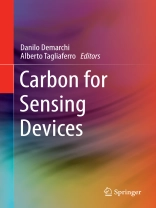This book reveals why carbon is playing such an increasingly prominent role as a sensing material. The various steps that transform a raw material in a sensing device are thoroughly presented and critically discussed. The authors deal with all aspects of carbon-based sensors, starting from the various hybridization and allotropes of carbon, with specific focus on micro and nano sized carbons (e.g., carbon nanotubes, graphene) and their growth processes. The discussion then moves to the role of functionalization and the different routes to achieve it. Finally, a number of sensing applications in various fields are presented, highlighting the connection with the basic properties of the various carbon allotropes. Readers will benefit from this book’s bottom-up approach, which starts from the local bonding in carbon solids and ends with sensing applications, linking the local hybridization of carbon atoms and its modification by functionalization to specific device performance. This book is a must-have in the library of any scientist involved in carbon based sensing application.
Table of Content
Section 1 Carbon Materials and their preparation.- Introduction to Carbon materials.- Technologies of Carbon Materials. Syntheses and preparations.- Section 2 Functionalization of carbon materials and surfaces.- Enhancing the surface sensitivity and selectivity: functionalization of carbon nanomaterials.- Section 3 Applications and devices.- Hybrid and nano-composite carbon sensing platforms.- Carbon nanomaterials for electrochemical and electrochemiluminescent medical sensors.- Silicon Carbide Materials for Biomedical Applications.- Piezo Resistance Strain and Pressure sensing using CNT+Polymers.- Diamond sensors.
About the author
Danilo Demarchi is an Assistant Professor in the Elettronica e Telecomunicazioni department of Politecnico di Torino, Italy. Alberto Tagliaferro is an Associate Professor in the Elettronica e Telecomunicazioni department of Politecnico di Torino, Italy.












